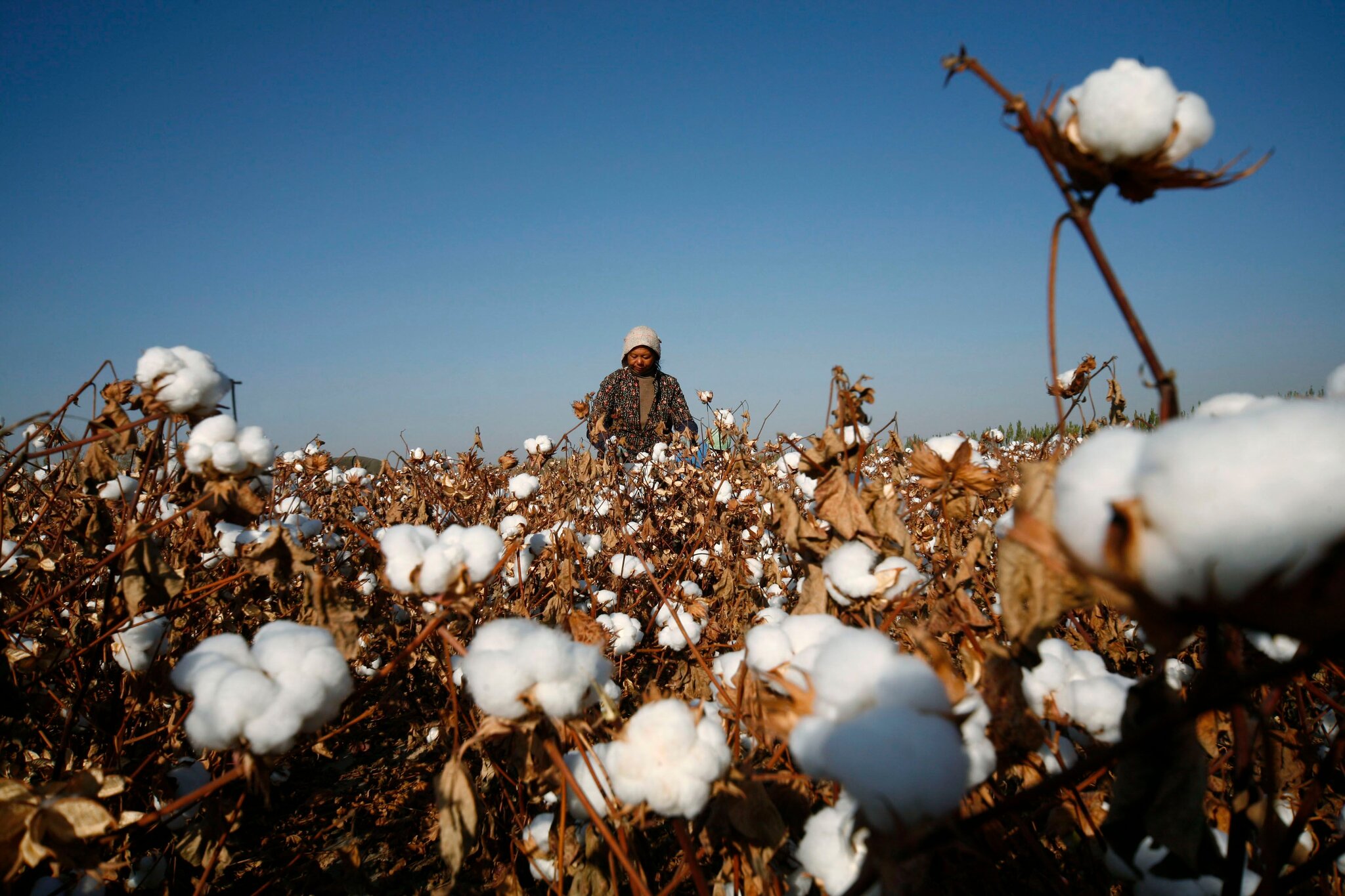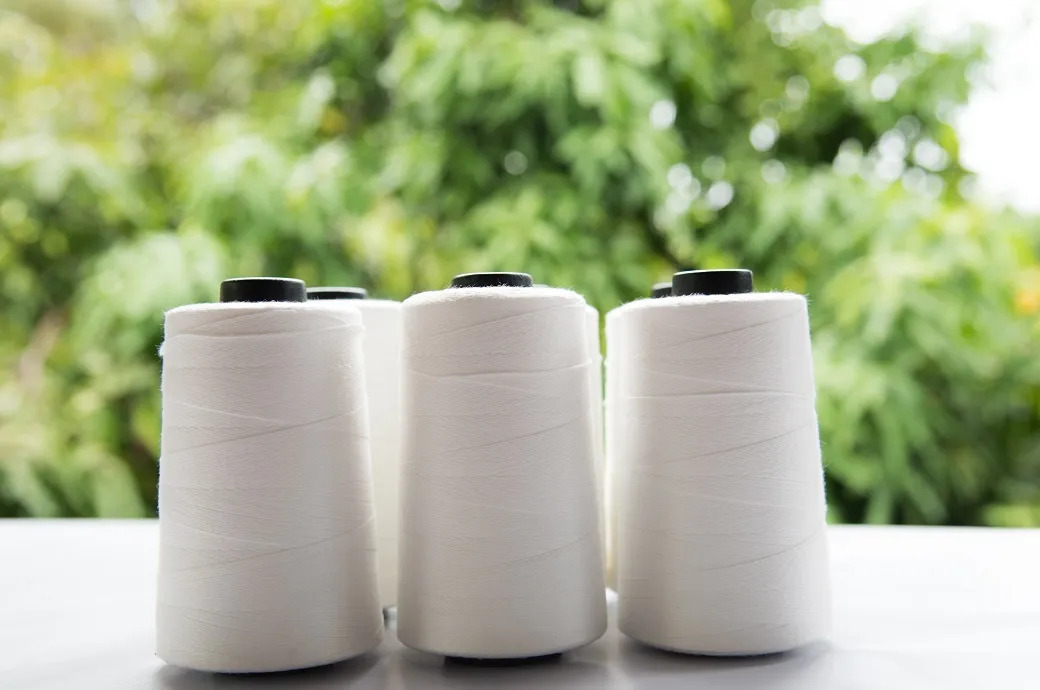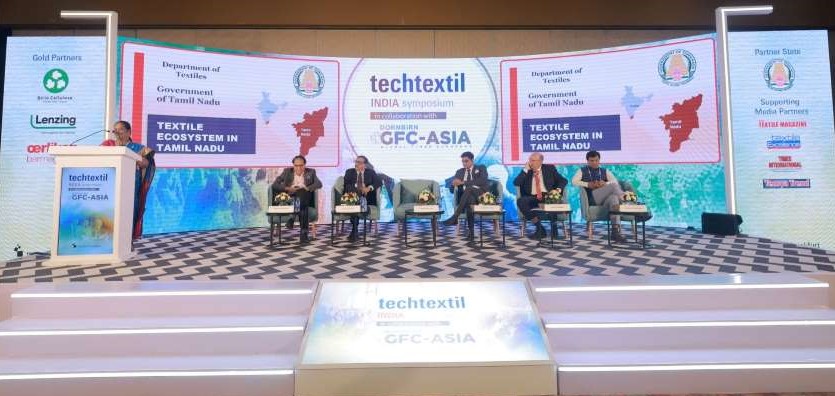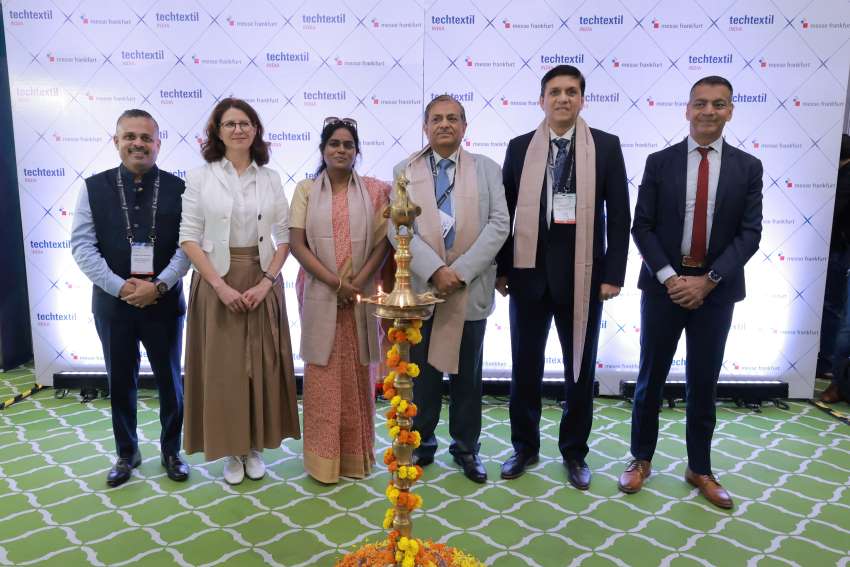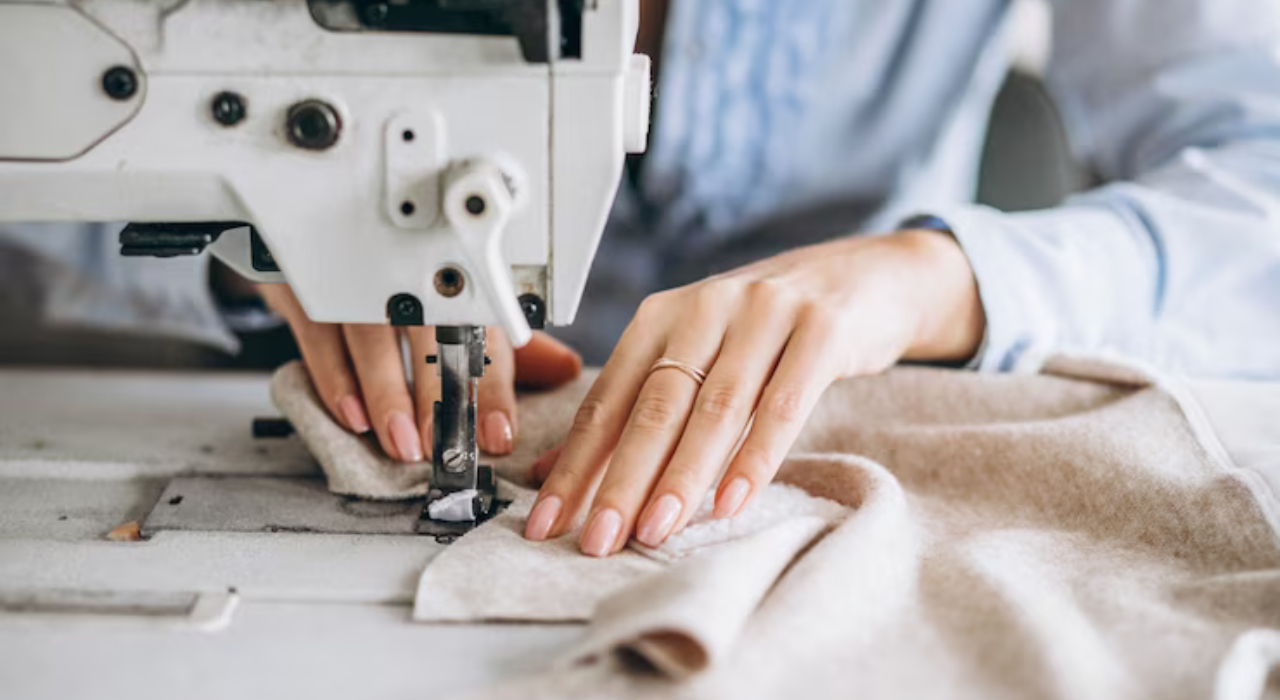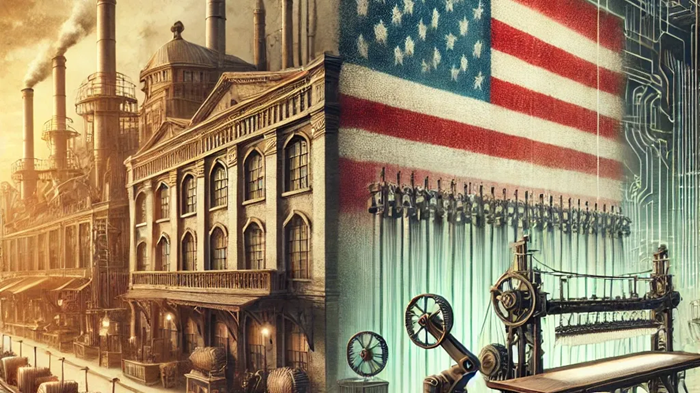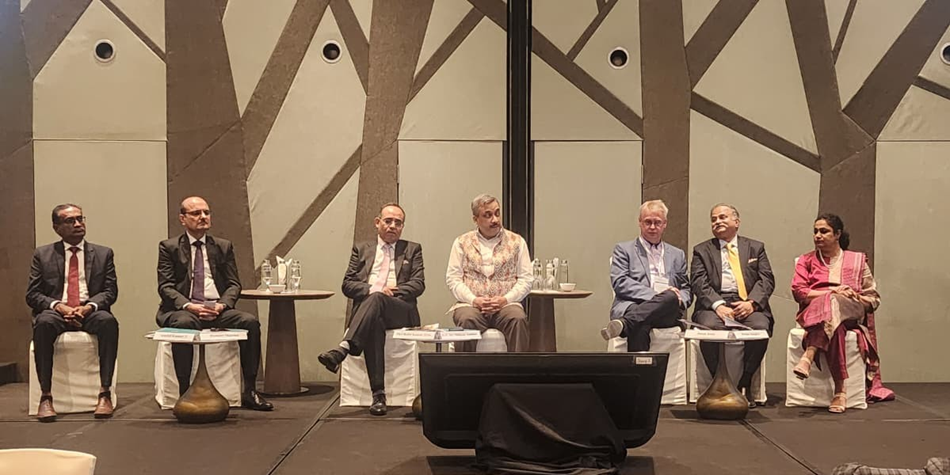FW
Held February from 5 to 8, 2017, ISPO Munich the trade show for sports industry attracted more than 85,000 visitors and 2,732 exhibitors. Strategies were developed and partnerships formed in personal exchanges. This year's ISPO Munich was more international than ever with a large number of visitors from Italy, Russia, Great Britain, China and the US.
Women in sports, both as industry executives and as a target group, were an important central theme this year. The focus was not just on selecting the right colors but on breaking away from conventional ways of thinking and doing a better job of taking women’s needs into account than in the past.
For instance, the women’s lounge was a meeting place that allowed a large number of female industry representatives to make new contacts. Special tours to the stands of manufacturers and a lecture program geared toward women attracted female visitors in large numbers.
Electronics continues to make its way into the sporting goods sector more noticeably than ever. Products on display included ski poles equipped with sensor technology, virtual reality headsets for a more emotional shopping experience and a digital ski trainer in an inlay sole.
Primark’s Sustainable Cotton Program aims to help women smallholders in India embrace environmentally friendly production techniques that can help boost yields. The program was launched three years back. It has worked with 1,251 farmers, delivering a 247 per cent increase in average profits over the period. Promoting environmental best practices has led to a 40 per cent reduction in chemical fertiliser use, a 44 per cent cut in chemical pesticide use, and a 10 per cent reduction in water use.
These techniques have cut input costs for farmers by 19.2 per cent, contributing to a increase in profits that female farmers have been able to invest in home improvements, healthcare and education for their children. Primark is now seeking to expand the program to cover 10,000 farmers over a six year period as it looks to curb the environmental impact of its supply chain and support women in rural India who currently face average incomes that are just 78 per cent of those experienced by men.
The program provides training to farmers, demonstrating how organic pesticides, lower levels of fertilisers, soil testing and using targeted irrigation rather than flooding can reduce environmental impact, lower costs, and boost yields. Primark's long term ambition is to ensure all the cotton in its supply chain is sourced sustainably.
American retailer BCBG is closing 120 stores.
California-based BCBG sells women’s dresses, apparel and accessories. The group is reducing its physical retail footprint after being negatively impacted by growth in online sales at its rivals.
The stores to be closed either are unprofitable or have untenable lease agreements.
BCBG is repositioning its brands and operations for the future with a focus on digital, e-commerce, selected retail locations, in-store boutiques and wholesale and licensing arrangements.
Glitzy fashion house BCBG was founded in 1989. The first boutique opened in 1992. The fashion brand has operated more than 570 boutiques worldwide, including more than 175 in the US. It has long been a favorite of red-carpet celebrities. Kate Winslet, Victoria Beckham and Alicia Keys have worn its fashions, which include cocktail dresses, handbags and other accessories. The name BCBG is short for the French expression bon chic, bon genre.
BCBG is just the latest retailer to announce plans to pare store counts in the face of increased competition from online sites. Kenneth Cole Productions, a fashion house and shoe company, announced plans in November to close almost all its shops. Macy’s recently announced plans to close 68 stores. Sears and J.C. Penney are also planning store closures.
"With speculation about the US President Trump imposing 20 per cent or other duty on Mexican imports, Mexico could slap ‘mirror’ tariffs against US fabric and apparel imports. This move is slated to negatively impact cross-border manufacturers and retailers. Analysts say for the US to come out with any other compensation treaty to avoid any trade deal damages."

With speculation about the US President Trump imposing 20 per cent or other duty on Mexican imports, Mexico could slap ‘mirror’ tariffs against US fabric and apparel imports. This move is slated to negatively impact cross-border manufacturers and retailers. Analysts say for the US to come out with any other compensation treaty to avoid any trade deal damages.
This statement came at a time when Mexico is set to begin negotiating the North American Free Trade Agreement (NAFTA) by May to meet Trump’s calls for a rewrite. That said, Mexico’s economy minister Ildefonso Guajardo said in mid-January that if Trump imposes a tariff or a border adjustment tax, Mexico would pursue ‘mirror actions’. This indicates the growing tensions between the two neighboring countries, longtime allies, as Trump pursues his plan to build a wall along the border and claims Mexico will pay for it. The 20 per cent tariff or other duty proposal forms part of the plan to fund the wall. Owing to such brewing tension, a possible trade war has strained diplomatic relations and unleashed a nationalist uproar in Mexico with populist groups calling for consumers to boycott American companies including Wal-Mart, Starbucks and McDonalds.
Textile trade dynamics
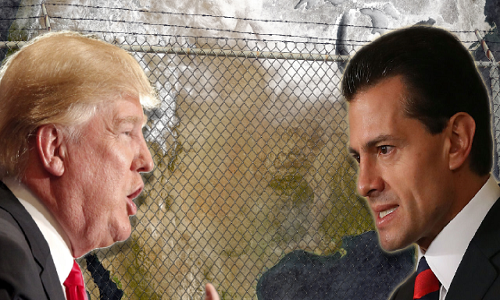
The US ships roughly $6.5 billion worth of apparel and textiles to Mexico — $4 billion is fabric and $1.2 billion apparel parts. Conversely, Mexico sends back $4.5 billion worth of clothing and textiles — $3.5 billion of apparel and $1 billion of textiles.
In 2016, the textiles and apparel sector grew 5 per cent as strong local apparel sales offset a 4.3 per cent drop in US sales. Going by such a scenario, local sales could grow 7 per cent compared to 10 per cent in 2016. Amid strong anti-American sentiment, local-brand turnover could eclipse US brands for the first time in recent memory.
Many consumers could shun Walmart in lieu of Mexican archrival Coppel or choose to buy at department-store chain Liverpool’s lower-end unit Fabricas de Francia. Mexican fashion designers, long in the shadows, could win consumer hearts. This is bad news for the likes of the Axo or El Palacio de Hierro network, which have grown by bringing aspirational US brands such as Calvin Klein, Tommy Hilfiger and Abercrombie & Fitch south of the border.
Finding newer avenues
To meet the challenges, Mexican apparel producers are seeking new markets in Central America and Europe with which Mexico has a largely vague free-trade agreement. Costa Rica, Panama and Central America could be good markets to compete on price and quality but not Argentina and Brazil, because they have very strong industries and brands. In Europe, Mexican fashion jean labels Oggi and Siete Leguas could make successful forays because they have high-quality products using innovative fabrics and new washing technologies. These companies sell premium jeans to Levi’s, Wrangler and True Religion so they could also start selling in Europe. That will require even more innovation, training and other investment the industry has been slow to pursue.
Exporters in the Tirupur cluster are disappointed with the RBI’s decision to keep the repo rate unchanged at 6.25 per cent. They were expecting a reduction in interest rate, post demonetisation. A reduction is as important at this juncture to increase competitiveness at a time when export growth rate was a meager 3.54 per cent for the nine month period of this fiscal year 2016 -17.
Exporters also feel this is the right time for knitwear sector to capture the market that’s leaving China, due to an increase in cost of manufacturing. If the opportunity is missed, the market would be captured by competing countries like Bangladesh, Vietnam, Indonesia and Cambodia.
They add that growth of the apparel, leather and footwear sectors, which are labor intensive, is possible only when they get borrowings at a lower rate. Similarly, they are concerned over the lack of thrust given to adequately fund the Pradhan Mantri Rojgar Protsahan Yojana, a scheme that was envisaged during 2016-17 financial year to incentivise employers for generating employment. The sixth bi-monthly monetary policy statement for 2016-17 has maintained the repo rate at 6.25 per cent.
The recent Milano Unica held from February 1 to 3, 2017 had 427 textile companies showcasing their products, of which 300 were from Italy, 65 from elsewhere in Europe, 40 from Japan and 22 from Korea. The benchmark trade show for Italian textiles and accessories showcased collections for Spring/Summer 2018. The event marked a major comeback of companies from the Russian Federation, whose numbers went up by 34 per cent. Equally remarkable were the increase in number of buyers from Canada and a rise in companies from China as and the UK and US.
But there was a decrease in visitors from France, Japan and Turkey besides a diminished German presence. Milano Unica has been created through the tradition of five Italian exhibitions, Ideabiella, Ideacomo, Moda In, Prato Expo, Shirt Avenue. The project is held twice a year and presents the finest quality products from both Italian and European textile manufacturers. The name Milano Unica represents the three essential characteristics of the textile fair, singular, exclusive, united.
Milano Unica has changed the date of the winter show. It will be held in July instead of September. One reason for the change is the show had lost some ground in the last few years. So this decision means it will be held earlier than other textile events.
Vietnam’s exports in 2016 rose 8.6 per cent over the year before. However, 70 per cent of the export turnover belonged to foreign owned enterprises. Which meant Vietnamese enterprises contribution was modest to the export turnover. The biggest problem for Vietnam’s garment producers is that they have to import input materials. Since Vietnam’s fashion design industry is still weak, Vietnam’s products cannot attract customers. And since Vietnamese companies are involved only in outsourced work, they cannot earn big money.
The country’s enterprises face the danger of falling into the outsourcing trap of low added value if the situation does not improve. As Vietnam tries to integrate more deeply into global economy, avoiding the outsourcing trap when joining value chains will be a great challenge. The country is the world’s fifth largest garment exporter. It has maintained double-digit growth, ranging on average from 10 per cent to 36 per cent, since 2001.
However, a strong Vietnamese dong and sluggish demand from key markets damped textile exports in 2016. Garment exporters are also faced with increasingly intense competition from outsourcing hubs Cambodia and Bangladesh, which get tariff preferences in the US market. Market access for Vietnam’s clothing in the US is limited by an average tariff of about 11.1 per cent, with tariffs on some textile and apparel products nearing 30 per cent.
Lenzing has developed a new fiber based on cotton scraps and wood. Called Refibra, it is the first cellulose fiber featuring recycled material on a commercial scale. Refibra stands for Reduce, Reuse and Recycle. This fiber is made of recycled materials and promises reduced reliance on natural raw materials. The fiber is produced in tencel production process. Tencel itself is an environmentally responsible fiber of botanic origin. Because Refibra is based on the tencel fiber, which has been internationally recognized for its environmentally responsible closed loop production process, Refibra offers a deep sustainability profile that clearly contributes to circular economy.
Refibra is expected to build Lenzing’s reputation as a leader in the field of environmental fiber technology and push for new solutions in the textile industry toward a circular economy by recycling production waste.
To assure customers that the fiber, made from recycled material, is really in the textiles, Lenzing has developed a new identification system. The system makes it possible to identify Refibra in the finished textile. This is said to guarantee transparency in the overall processing chain. The Refibra fiber itself is part of the global Lenzing Branding Service and the brand is licensed once the textile has undergone a certification process.
Haryana is coming up with a new textile policy aimed at making it a global hub for textile manufacturing and a preferred investment destination. The policy is packed with fiscal incentives and contains provisions for infrastructure augmentation, setting up of textile parks and facilities for skill training. It aims at generating 50,000 new jobs by attracting investment in the textile sector to the tune of Rs 5,000 crores. It aims to boost textile exports by a compound annual growth rate of 20 per cent during 2017.
The policy proposes a capital subsidy of 10 per cent for eligible new projects of all textile enterprises across the state. It has been formulated with an eye on the cotton belt of Haryana. The state is one of the leading cotton producers in the country. This sector provides employment to about one million people and readymade garments worth two billion dollars are exported from the state annually.
The textile policy will incentivize setting up of new units and ensure growth and modernization of existing textile industry in the state. Help will be offered for setting up textile parks exclusively for garmenting units with provision of labor, housing and built-up sheds (to be provided on a lease basis) to facilitate the expansion of the garmenting industry in the state.
Planet Textiles will take place in Bangalore on May 24. This is an annual summit on environmental issues for the textile sector. This year’s event will highlight the crucial issue of textile waste, water pollution, chemical management and natural resource conservation, including energy and water use. Planet Textiles will attract companies along the entire global textile supply chain to accelerate their sustainability initiatives in order to meet the market’s demands.
Speakers will present methods for improving and managing global sustainability measures with emphasis on third party, independent certifications as important and effective business tools. Planet Textiles is the leading international event on sustainability in the textile sector because it discusses real-world practical issues and ideas on how the global supply chain can move to a more sustainable future.
This is jointly organized by Messe Frankfurt, the leading trade fair organizer, and Sustainable Apparel Coalition, an industry-wide group of leading apparel and footwear brands, retailers, manufacturers, NGOs, academic experts and the US Environmental Protection Agency that aims to reduce the environmental and social impacts of apparel, footwear and home textile products around the world. The last edition attracted over 440 industry leaders – from fiber and textile suppliers through to the world’s largest clothing brands and retailers. The first edition of Planet Textiles took place in 2009 in Hong Kong.

